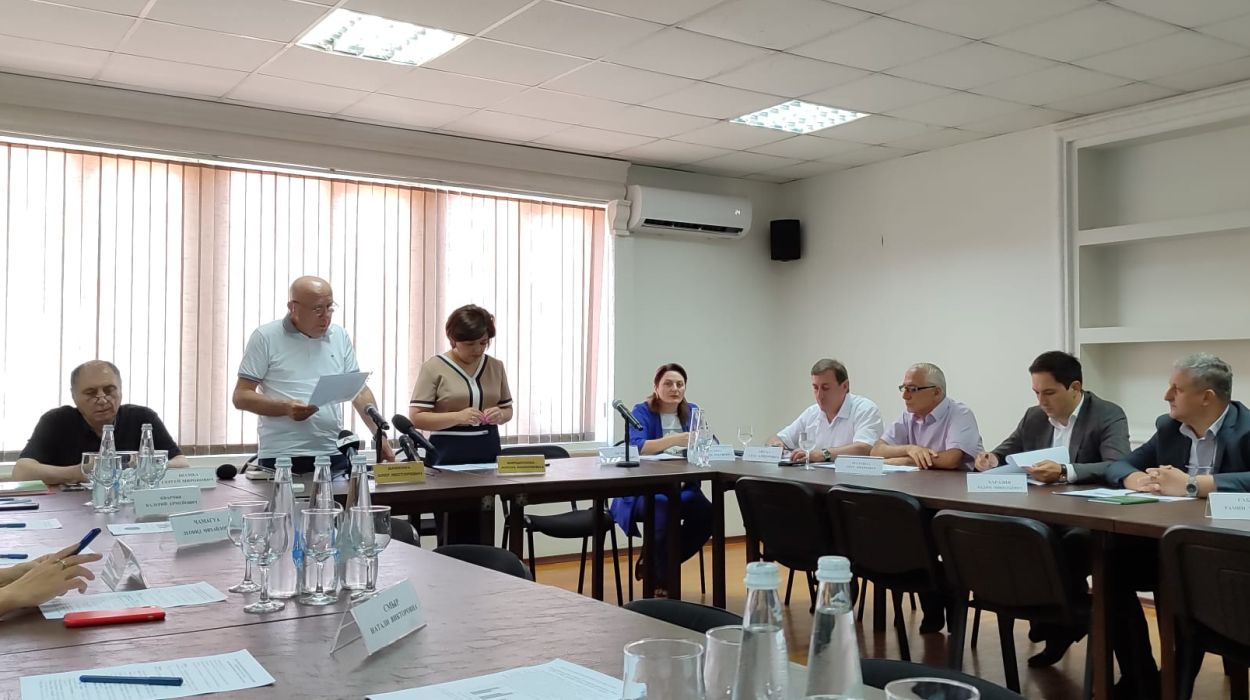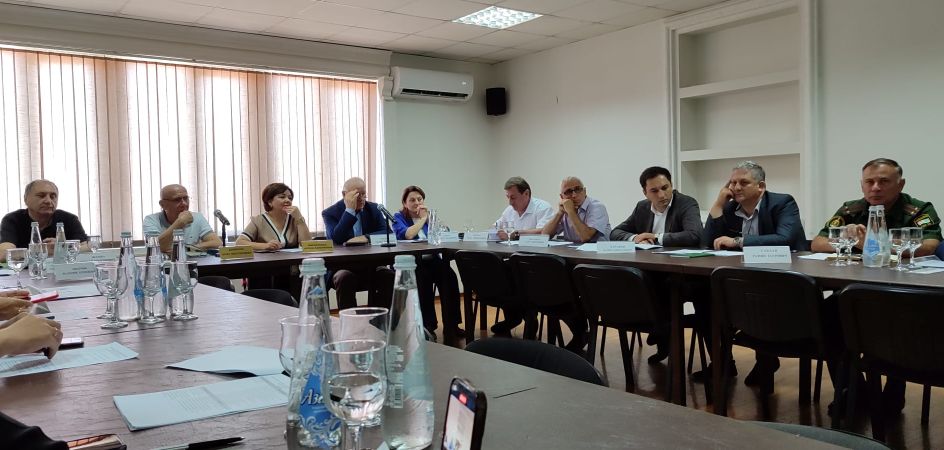Addressing the Challenges of Abkhazia's Demographic Shift: A Roundtable Discussion

Oleg Damenia delivering the opening speech at the roundtable discussion.
SUKHUM / AQW'A — On Friday, July 21, the Centre for Socio-Economic Research conducted a roundtable discussion dedicated to the demographic security of Abkhazia.
In the main report on "Demographic Development of Abkhazia", Amra Tsushba, a leading research associate of the National Economy Department of the Centre for Socio-Economic Research and candidate of economic sciences, highlighted the following critical issues:
- Men's short life expectancy, caused primarily by an exceptionally high mortality rate among the male working-age population, resulting in a decreased overall life expectancy indicator;
- A skewed gender population structure due to the gap in life expectancy between men and women;
- Low birth rates;
- High infant mortality rates;
- Deterioration of women's reproductive health, as well as new-born health;
- The clandestine nature of a significant portion of migration flows, mainly involving labour migrants whose stay and work are not legally registered in accordance with migration and labour legislation.
Tsushba also provided specific data based on official statistics:
- The number of births in 2021 was 601 fewer than in 2017;
- The number of deaths over the same period increased by 523 individuals;
- The number of marriages decreased by 255, while the number of divorces increased by 23 cases;
- The total population of the Republic of Abkhazia increased by 3,531 people from 2011 to 2021;
- Abkhazians make up just over half of the republic's population, at 51.3%.
Tsushba emphasised that the primary strategic goal of Abkhazia's demographic security is to increase the population while maintaining ethnic diversity and strengthening the integrating role of the Abkhaz ethnic group. She underlined the lack of a state program for demographic development, a weak institutional base, depopulation, ageing population, and degradation of the family institution as factors weakening the republic's demographic security. Tsushba remains confident that the situation is not hopeless.

Tsushba believes there is a window of opportunity to positively influence Abkhazia's current demographic situation, although this window is time-limited for certain key indicators. According to her analysis, Abkhazia possesses a crucial demographic resource that may lead to an optimal scenario for demographic development: the current active reproductive and working-age population, which accounts for 56.2% of the total populace. This demographic potential could be capitalised upon over the next 3-4 years, after which the effects of the "postwar demographic pit" will become increasingly noticeable. Nevertheless, she contends that a comprehensive and effective demographic policy could potentially set Abkhazia on an optimal path of demographic development within this timeframe.
Tsushba identifies the strategic goals of the Republic of Abkhazia's demographic policy as the stabilisation of Abkhazia's population, the creation of conditions for population growth by 2025, and improvements to the quality and longevity of life. Accomplishing these objectives significantly depends on successfully addressing a broad range of socio-economic development tasks. These include ensuring steady economic growth and improving population welfare, intensively developing human potential, creating effective social infrastructure (healthcare, education, social protection), fostering a flexible labour market, and improving sanitary-epidemiological conditions.
Furthermore, Tsushba shared data regarding the repatriation process. From 2017 to 2021, 977 individuals returned to Abkhazia. In this same period, the Repatriation Fund received 758.3 million rubles (about $8.3M). The funds were distributed as follows:
- Housing for repatriates: 379.2 million rubles (about $4.1M);-
- Material aid to repatriates: 83.4 million rubles (about $920K);
- Administrative expenses: 44.4 million rubles (about $490K).
The primary challenges facing repatriates were identified as:
- Language barrier;
- Difficulty with social adaptation;
- Issues with document processing;
- Lack of job opportunities.
In outlining the key areas of focus for Abkhazia's demographic policy, Tsushba underscored the importance of boosting birth rates, reducing mortality rates, repatriating compatriots, and optimising migration processes. The report highlighted several mechanisms for implementing this policy, including legal, organisational, financial-economic, scientific-methodical, and informational measures. A subsequent discussion featured Bella Pilia, head of the maternity ward at the Republican Hospital, who noted that birth data only account for children born in Abkhazia, which may result in a degree of statistical inaccuracy.
Pilia explained that some affluent individuals in Abkhazia can afford to access maternity services in Russian clinics, often in the city of Sochi. She estimated that approximately 30% of the local population, mainly Abkhazians, choose to do so. "It's becoming trendy and prestigious. As a result, we're missing a lot of statistical data," she remarked.
Among the reasons for this trend, Pilia cited the comprehensive social package offered to new mothers in Russia and the convenience of processing all documentation directly in the maternity hospitals. She added that the funding of these medical institutions in Russia directly correlates with the number of births they handle, which is why "they're competing for every one of our women."
"Unfortunately, we don't have that," admitted Pilia. She suggested the development of a system to account for such cases.